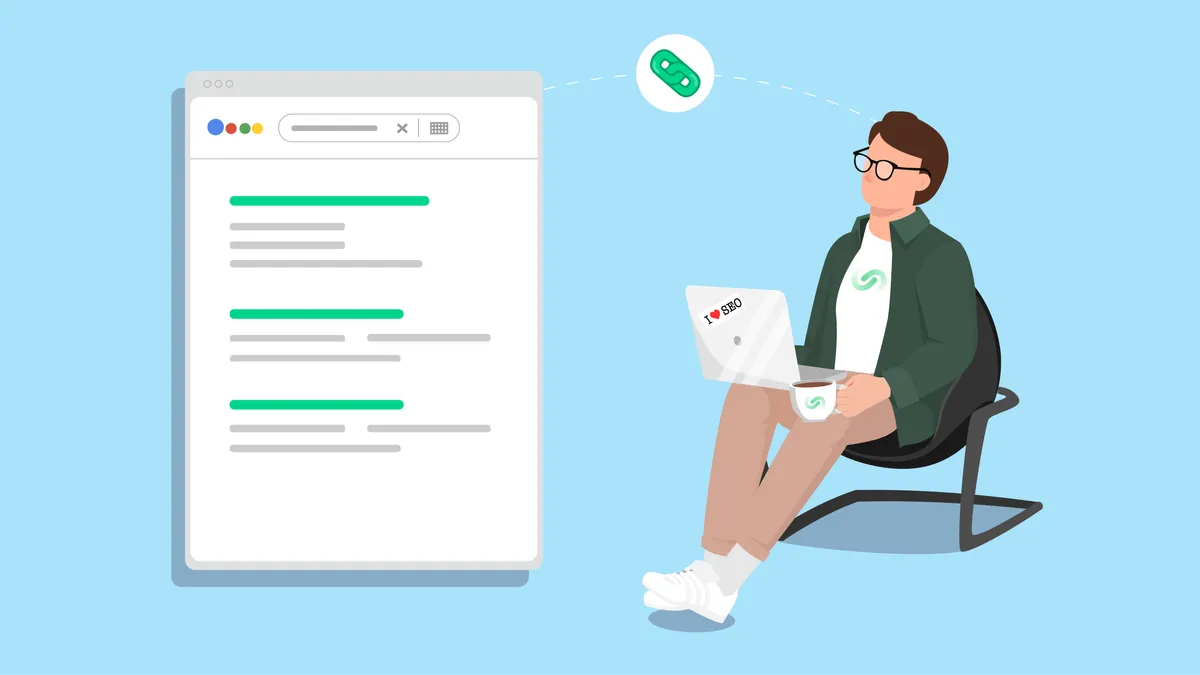
10 Proven Link Acquisition Strategies That Work In 2025
Link acquisition often feels like a catch-22.
Google sees backlinks as one of the most important ranking factors, but it also strongly discourages unnatural link-building tactics.
The reality is that 99.5% of websites get no traffic from Google, often because they lack backlinks.
Expecting other website owners to stumble across your content and link to it organically is wishful thinking. To stand out, you need to create valuable, expert content that is designed for link acquisition and promote your site through strategic outreach.
The key is to focus on quality over quantity and build links in a way that aligns with Google’s guidelines.
In this article, we explore the most effective link acquisition strategies that actually work in 2025.
What Is Link Acquisition?
Link acquisition is an SEO technique that involves securing inbound links from other websites.
These valuable backlinks act as "votes" in favor of your content, and show search engines that your site is trustworthy and valuable.
The more high-authority sites you have linking to yours, the better your chances of improving your search engine rankings.
⚠️ Good and bad links
Not all links are created equal. When it comes to link acquisition, quality always beats quantity.
One link from a respected, relevant website is more valuable than a bunch of links from spammy sites. This is because high-quality links from authoritative websites pass on more link juice, which has a greater impact on your search engine rankings.
💡 Why Link Equity Is So Important
Link equity, also known as "link juice," is the value or authority that one website passes on to another through a backlink.
When a high-authority site links to your content, it passes on some of its own authority to your page. This boost can help your site rank higher.
The more high-quality links you have pointing to your site, the more authoritative your website will be in the eyes of search engines.
While it can be tempting to go for link-building shortcuts (like buying cheap, bad links), this can backfire because Google penalizes websites that use shady tactics.
Instead, your link acquisition efforts should be focused on high-quality backlinks.
High-quality backlinks are:
✅ Relevant: Links should come from websites that are closely related to your niche. A relevant backlink shows search engines that your content is valuable within that specific context.
✅ Authoritative: Focus on earning links from reputable websites. These sites pass on more link equity and have a greater impact on your rankings. You can check a site’s authority with the Ahrefs Authority Checker or Moz.
✅ Naturally placed: Links should be naturally placed within web pages and make sense in the given context. Links should never be placed artificially where they don’t belong, such as in headers, footers, or over-optimized anchor text.
✅ Diverse: Search engines see a well-rounded link profile as more trustworthy. Build a diverse backlink profile by earning links from a variety of sources, such as blogs, news outlets, and industry directories.
✅ Based on relationships: Building relationships with website owners can lead to further opportunities to support your backlink acquisition efforts. Developing trust can also result in natural links over time as your partners will be more likely to share your content.
The 10 Most Effective Link-Building Strategies of 2025
While link acquisition tactics are constantly shifting, some strategies continue to prove their worth. Here are the 10 most effective link-building strategies we’re using in 2025.
🚀 Linkable assets
Linkable assets are pieces of informative content specifically designed to attract backlinks.
They’re an effective link acquisition technique because they provide value that other websites naturally want to share with their audiences.
By creating valuable content, you encourage others to link to your site without necessarily having to ask. Here are a few of our favorite types of linkable assets:
Original research
When you release original research results, it can become a go-to resource for websites in your industry, which naturally leads to link acquisition.
Content writers might use your research to prove their point, highlight an issue, or simply share it with their readers because it’s interesting.
For example, Hubspot’s 2024 State of Marketing & Trends Report has acquired over 11,000 links, including backlinks from high-authority websites such as Shopify, Investopedia, Forbes, and the New York Times:

The report, which is relevant to marketers, business owners, and anyone interested in the latest marketing trends, is a fantastic example of a linkable asset.
It offers valuable insights from over 1,400 global marketers, which makes it a credible source of information.
This type of original research is great for acquiring links because it provides exactly what others site owners, journalists, and bloggers look for when they need statistics to support their own content:
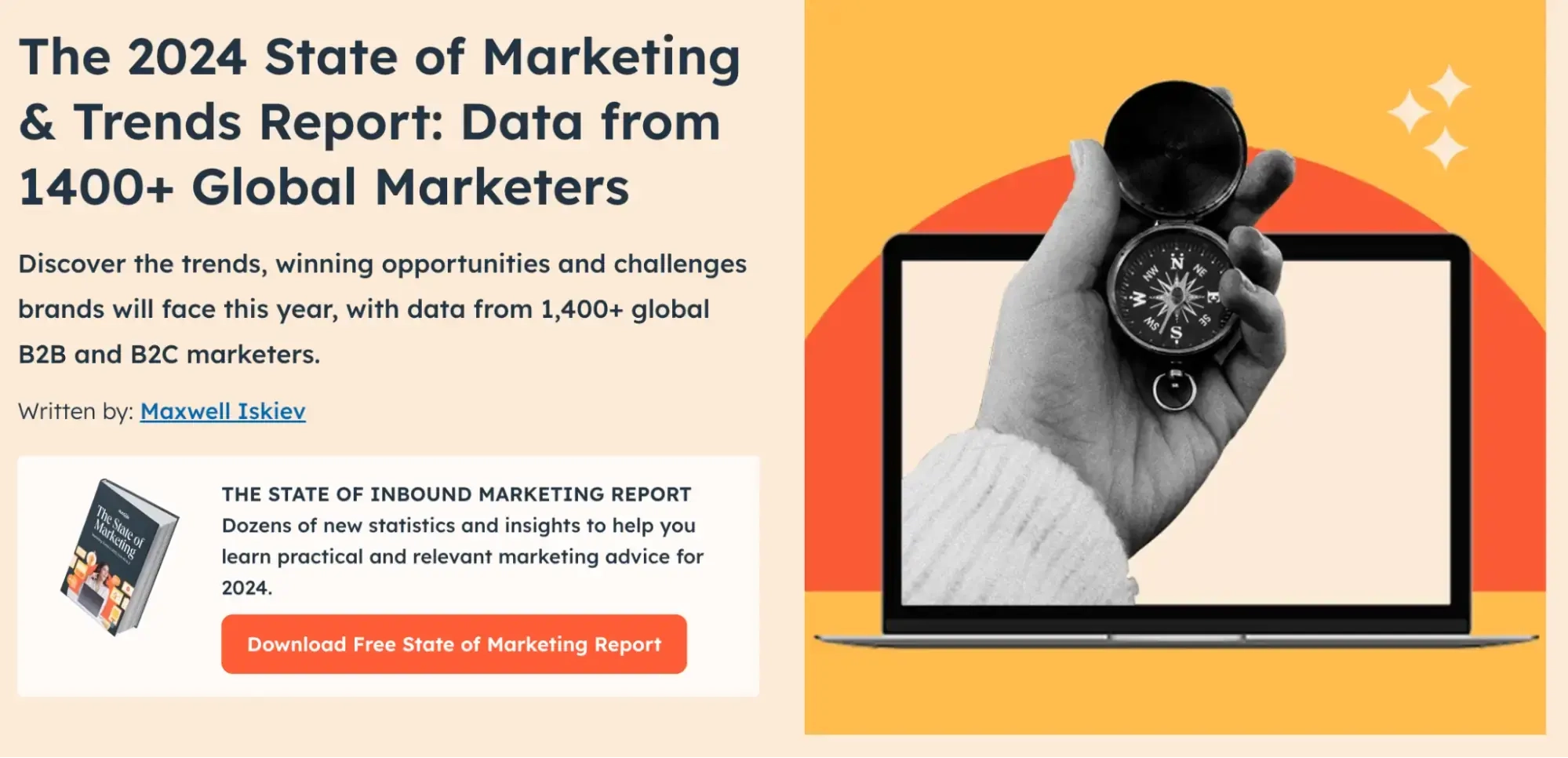
Free tools
Free tools are online resources that offer immediate value by solving a problem or simplifying a process for users.
When people find a tool helpful, they’re likely to share it with others and link back to it as a valuable resource. Creating a free tool is a particularly effective link-building strategy for industries where users need quick solutions or ongoing support.
Take, for example, Bankrate’s mortgage calculator:
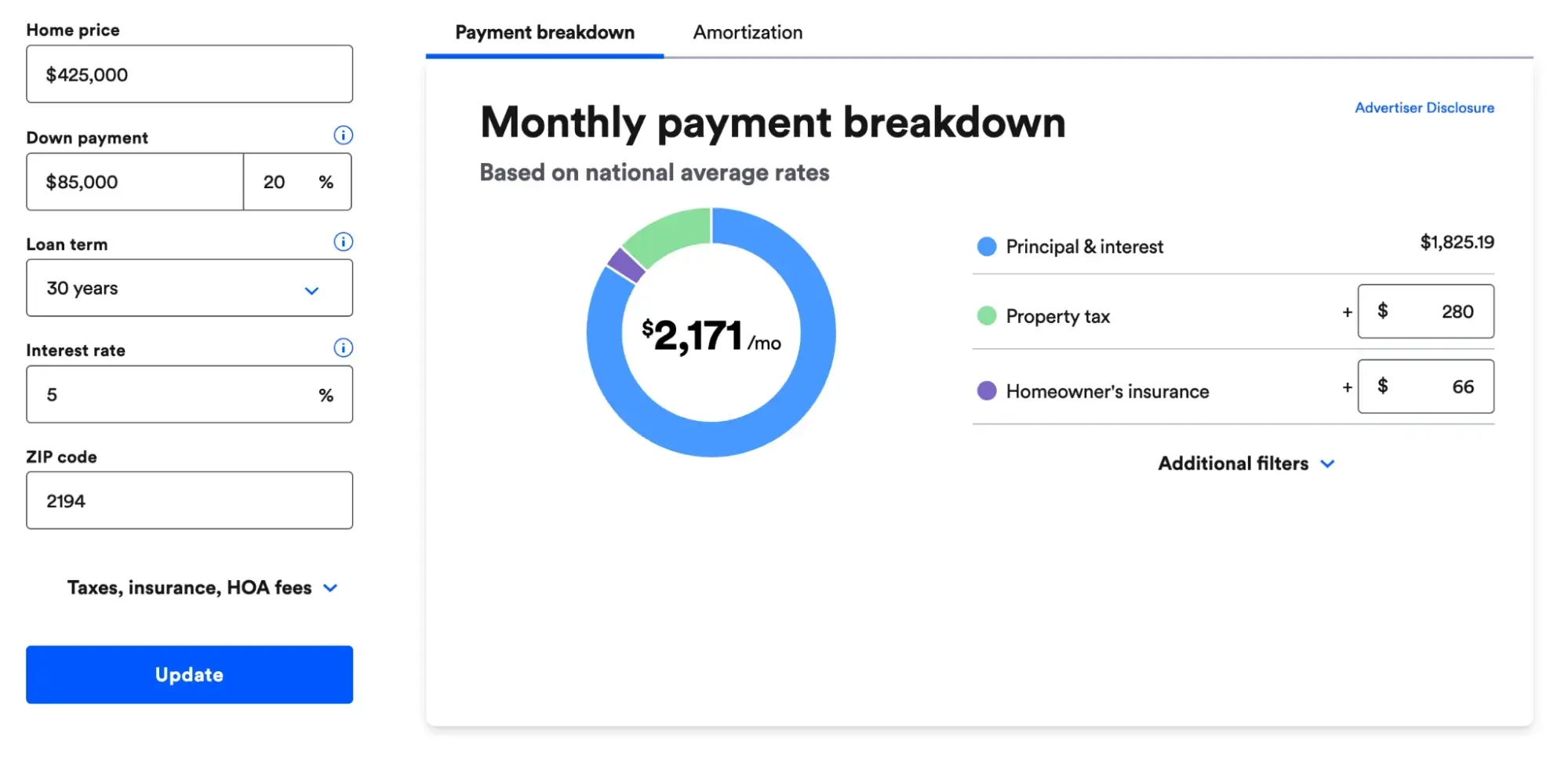
This easy-to-use tool is relevant to a wide target audience, which makes it a perfect type of linkable asset to acquire links.
Over its lifetime, the page has secured over 35,000 links, including some from high-authority websites like CNN, Business Insider, and NPR:

🚀 Resource page link building
Resource pages are collections of helpful links, tools, and content that websites compile to give their users valuable information.
These pages are organized around specific topics or industries, and they serve as a go-to reference for anyone looking for high-quality resources on a particular subject.

Once you’ve created a valuable linkable asset, promoting it on resource pages is a natural next step to boost interest in your existing content. You can reach out to sites with relevant resource pages and pitch your asset as an addition to their list.
Resource page link building works because you’re offering something the website owner already wants: useful content to share with their audience.
It’s a win-win; their resource page becomes more valuable, and you earn valuable backlinks.
💡 How to Find Relevant Resource Pages
One of the most efficient ways to find relevant resource pages is to use Google search operators, such as:
intitle:"resources" + your keyword
intitle:"resource page" + your keyword
inurl:resources + your keyword
inurl:resource page + your keyword
For example, if you’ve created a financial calculator aimed at new mothers, you might type in the search operator intitle:"resources" + finance for moms.
🚀 Unlinked brand mentions
Unlinked mentions happen when your brand, product, or content is mentioned on another website, but without a backlink back to your site.
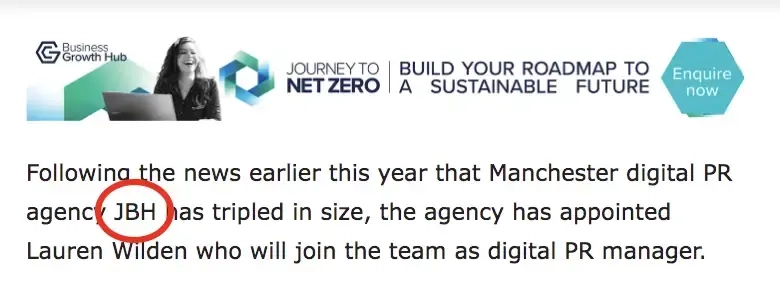
These are valuable link-building opportunities because the hard part of getting someone to talk about you is already done.
All that’s left for you to do, is to reach out and request that the mention be turned into a clickable link.
For more information on how to find and leverage these opportunities, check out our guide to unlinked mentions.
🚀 Guest blogging
Guest blogging is the practice of writing blog posts for other websites in your niche, with the goal of acquiring quality backlinks.
Guest blogging requires finding blogs in your niche that accept contributions. Once you’ve identified those sites, you’ll need to pitch relevant content ideas and craft well-written posts that offer real value to their readers.

Guest posting allows you to tap into an existing audience while establishing yourself as an expert in your industry.
Beyond securing backlinks, guest posts can also help you:
Drive referral traffic
Improve your site’s credibility
Establish your online reputation
Build relationships in your industry
Guest posting is one of the few link-building strategies where you have full control over the quality and relevance of the content being published. This means you can always make sure your brand or business is represented in the best possible light.
🚀 Broken link building
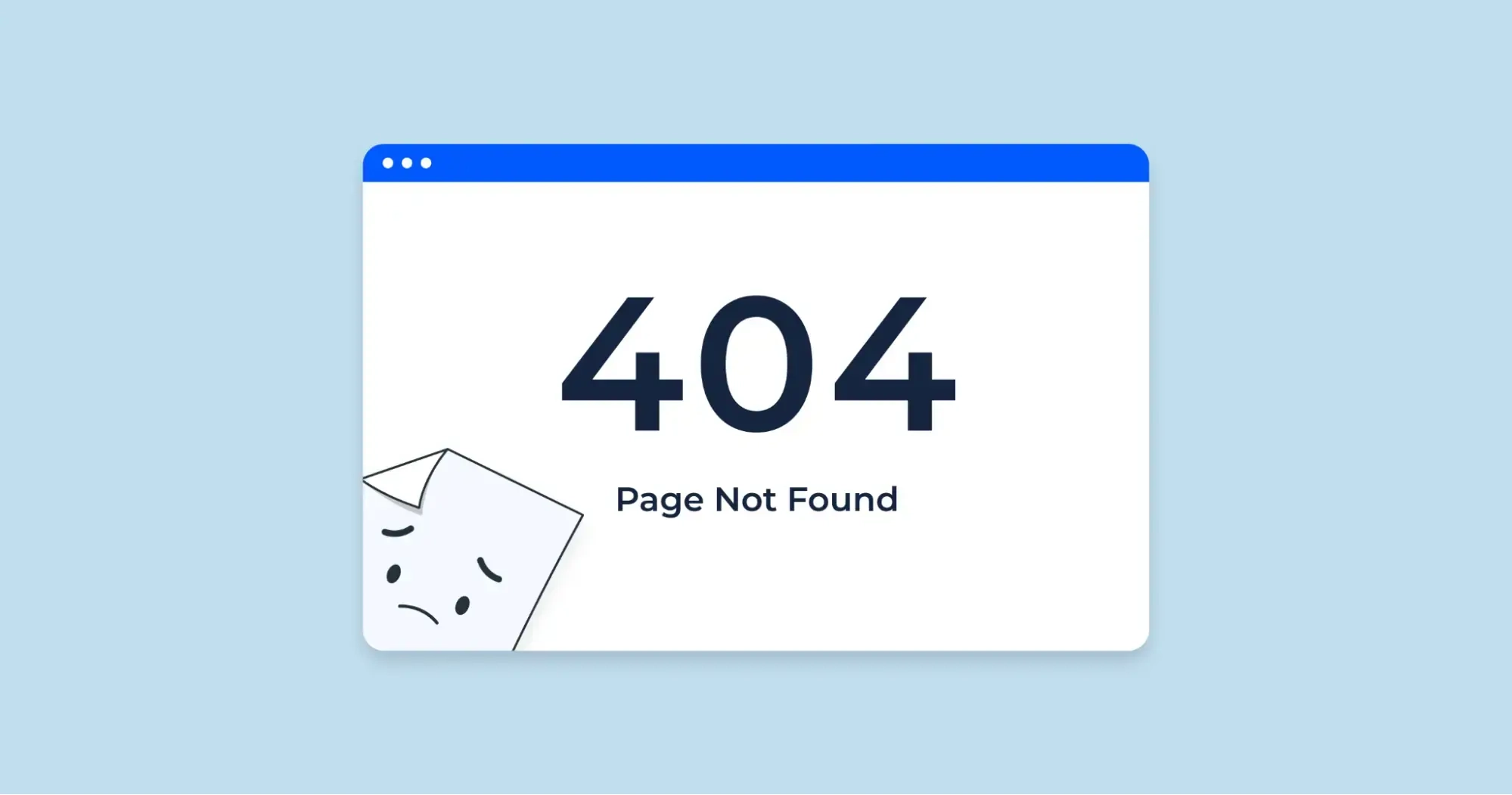
Broken link building is a powerful link acquisition strategy that involves finding broken links on other websites and suggesting your content as a replacement.
When a site has a link that leads to an error page or outdated resource, you can swoop in with a helpful solution: offer your own relevant content.
The website owner gets to fix a broken link and you get a high-quality backlink in return.
Broken link building is a particularly useful link acquisition technique for sites with evergreen content such as guides, tutorials, and case studies, since these types of resources make good replacements for broken links.
💡 How to Find Broken Links
Tools like Ahrefs, SEMrush, or Check My Links can help with identifying broken links.
Once you’ve found a broken link, reach out to the site owner with a friendly message pointing out the issue and suggesting your content as a replacement.
🚀 Image link building
Image link building is a strategy that involves earning backlinks through the use of unique, high-quality images.
Many websites, bloggers, and content creators are looking for images to complement their content. If you create eye-catching visuals, you can attract external links when others use your images and link back to you as the source.
Your images can include infographics, original photos, charts, or illustrations that other websites find valuable and want to use in their own content.
First, you’ll need to create high-quality visuals. Then, you can either distribute these images through platforms like Pinterest or your own website, or reach out to websites that might benefit from using them.
Tools like Google’s reverse image search can help you track where your images are being used without credit.
When you find them, reach out to the site owners to secure backlinks to your site.
Google image search is easy to do. Simply click the camera icon in the Google search bar and then drag the image you want to search for.

🚀 Posting on forums and social media
Posting on forums and social media is a great way to build backlinks while engaging with your target audience within online communities they’re active in.
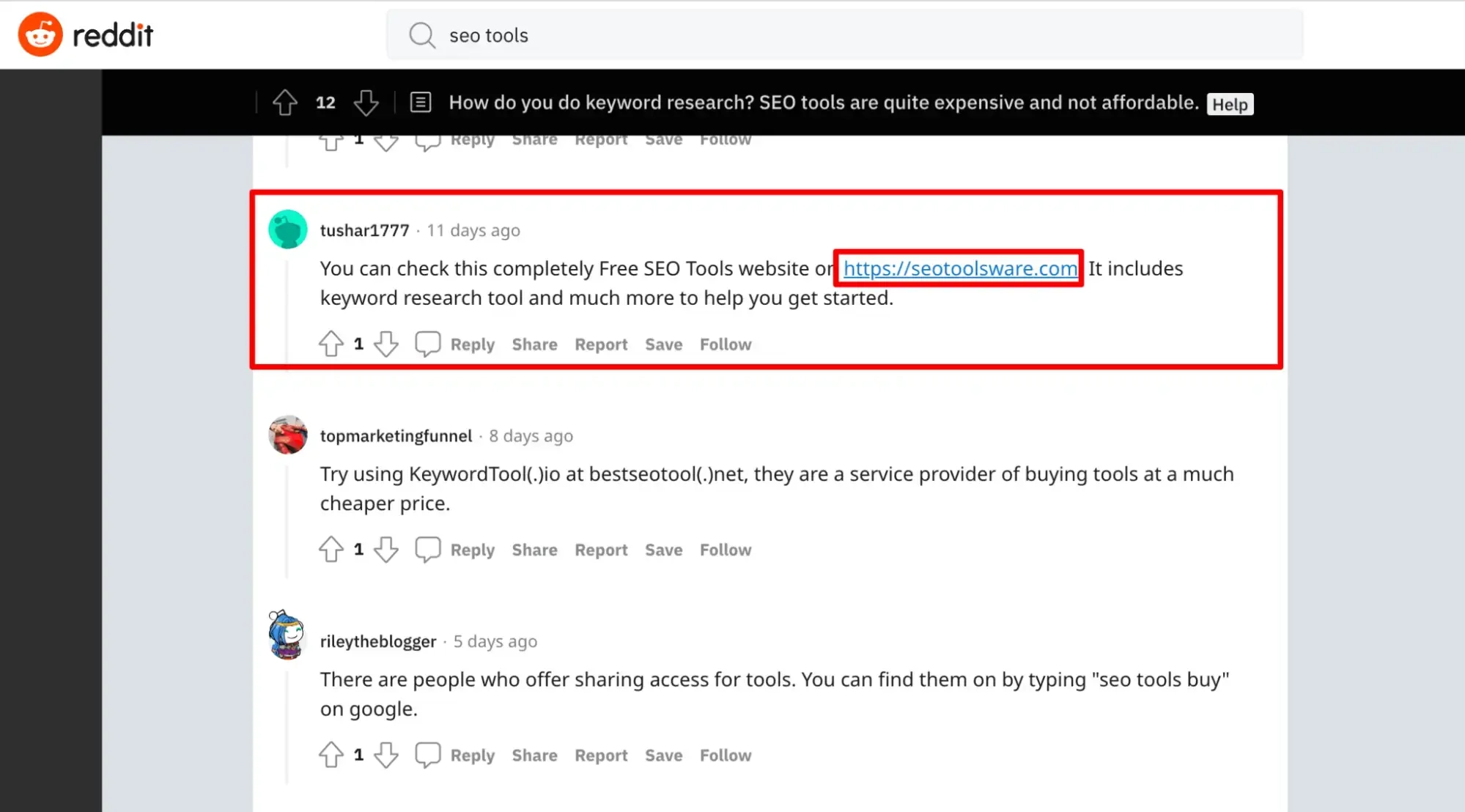
By joining relevant discussions on platforms like Reddit, Quora, niche-specific forums, LinkedIn, and Twitter, you can showcase your expertise and share valuable content.
The key to this link acquisition technique is authenticity.
Providing valuable insights and thoughtfully answering questions help your audience trust you, and that’s when they’re most likely to click on or share your website link.
First, find relevant websites and social media platforms where your audience is active.
Participate in conversations and only include your link when it’s directly relevant to the conversation.
You don’t want to come across as overly self-promotional because you risk losing credibility and trust.
🚀 PR backlinks
Did you know that public relations and link building are deeply connected?
When you secure press coverage, whether through expert insights, information about your products or services, or unique content, media outlets often link back to your website.
When reputable media outlets or influential blogs mention your brand and link to your site, it’s a strong signal to search engines that your content is trustworthy and authoritative.
These backlinks not only improve your search rankings, but also drive targeted referral traffic to your site. Plus, PR backlinks usually come from high-authority websites, which makes them some of the most coveted links in any link-building strategy.
However, because these sites are so authoritative, getting a PR backlink from them can be tough.
One of the best tools to earn PR backlinks is Connectively (formerly HARO), which connects journalists with expert sources for quotes and insights.
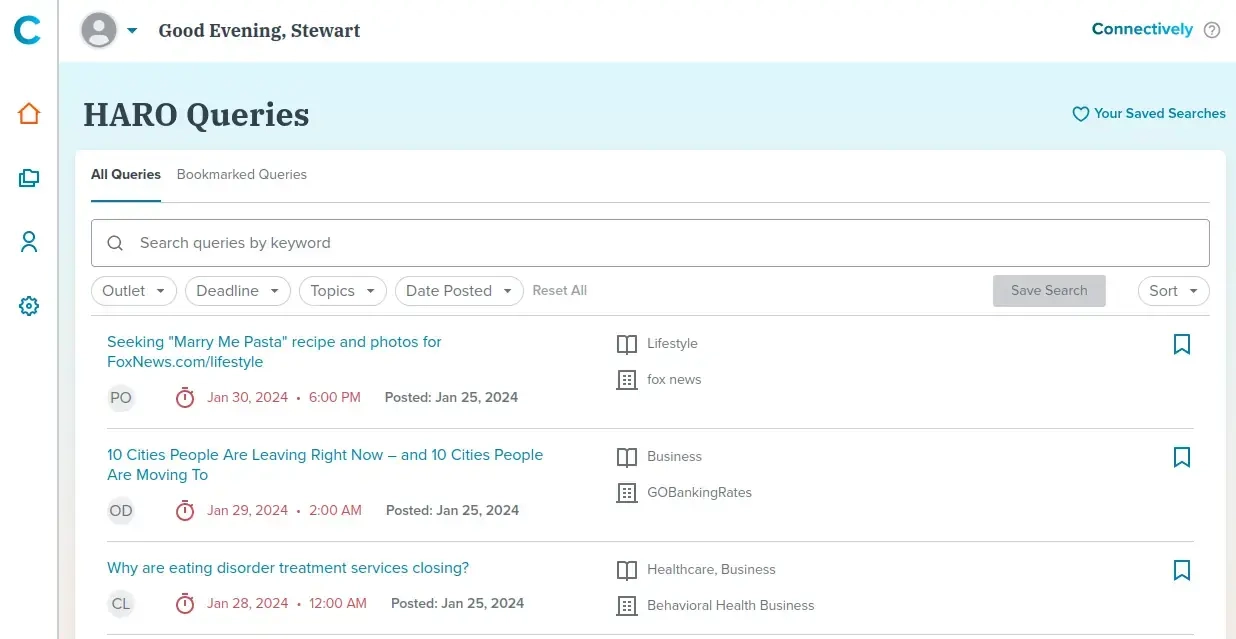
By responding to relevant media queries through Connectively, you can get featured in articles on authoritative websites such as Forbes, Business Insider, CNN, and the New York Times.
🚀 Niche edits
Niche edits are a link acquisition strategy that involves adding your website’s link to an existing article or blog post on a relevant site.
Instead of creating new content from scratch, you’re placing your link into content that’s already been published, indexed, and potentially ranking well on search engines. This lets you tap into an article’s existing authority and audience.
Say, for example, a personal finance blog features an article on planning for retirement. You might want to suggest adding a link to your free retirement calculator tool to offer readers a way to calculate their savings goals.
Including niche edits in your link-building efforts is a smart move because it gives you:
✅ A faster SEO impact: Since you're inserting your link into content that already ranks well, you will see quicker improved search engine rankings compared to waiting for new content to gain traction.
✅ High relevance: By targeting articles that are directly related to your industry or niche, niche edits result in highly relevant backlinks.
✅ Lower effort, high reward: Rather than creating and promoting entirely new content, you’re leveraging posts that have already done the heavy lifting in terms of ranking.
To secure niche edits, you’ll need to identify relevant content in your industry, then reach out to the site owners and suggest your link as a helpful addition to their existing articles.
🚀 Link exchanges
Link exchanges involve two websites agreeing to exchange backlinks, with each site linking to the other’s content.
Not only does this help you earn a valuable backlink, it also increases your online visibility and organic traffic, and helps you build relationships in your niche.
This strategy is most beneficial for businesses or blogs that are in complementary industries, where audiences overlap but don’t directly compete. For example, a nutrition blog could exchange links with a fitness website.
The nutrition blog might link to a workout routine post, while the fitness site links to a healthy meal prep guide. Both website owners provide value to their audiences and benefit from the backlink.
This strategy can be a highly effective link acquisition technique. However, link exchanges need to be approached carefully to avoid violating Google’s guidelines.
Engaging in excessive or unnatural exchanges can result in penalties from Google, as it sees reciprocal links as an attempt to manipulate rankings. If you exchange a high volume of links with spammy websites, link farms, or private blog networks (PBNs), you could get penalized.
To avoid penalties that would harm your site’s ranking potential, ensure that your links make contextual sense and genuinely add value for readers.
Take the Guesswork out of Link Building
Link acquisition is critical to get your site featured in Google’s top search results. However, you need to get it right.
Low-quality, spammy links can harm your SEO. Building high-quality links takes time, effort, and strategy; it's not as simple as relying on quick fixes. The challenge lies in earning authoritative links that boost your SEO without violating Google’s guidelines.
At Linkbuilder, we take the guesswork out of link acquisition with our proven link-building strategies that get results. Ready to rise in the rankings? Contact us today and let’s make it happen.

